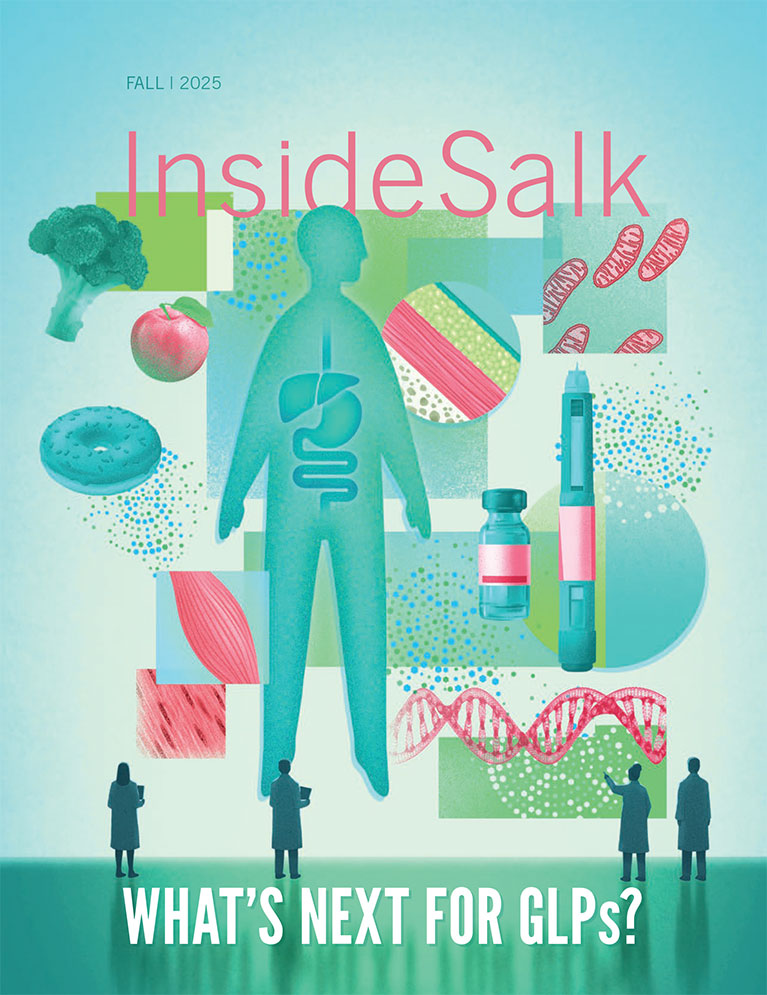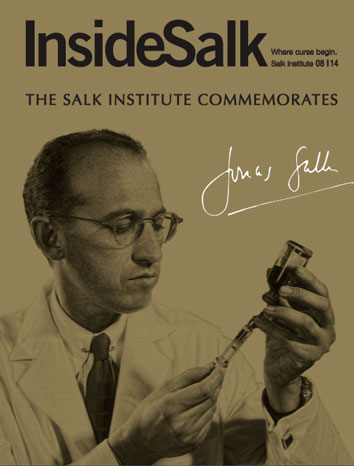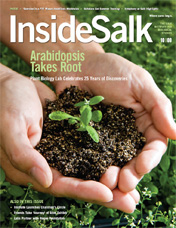The Jacobs Effect An Interview with the outgoing chairman of Salk's Board of Trustees,Irwin Jacobs
Perhaps it’s his humble nature that prompts tech titan and philanthropist Irwin Jacobs to credit good luck to his life of wild successes. But to everyone else it’s clear that the lucky ones are the many people who have benefited from the vision, service and incredible generosity of Jacobs and his wife, Joan. The Salk Institute and those helped by the Institute’s biomedical research have been particularly fortunate that Jacobs served as chairman of Salk’s Board for 10 years and that he and his wife have supported Salk science for even longer.
As a co-founder of Qualcomm in 1985, Jacobs redefined how the world thinks of telecommunications and information technology, including developing and commercializing Code Division Multiple Access (CDMA) in wireless networks.
The Jacobs have long been generous supporters of the San Diego Symphony, the Museum of Contemporary Art, San Diego, the La Jolla Playhouse, and the University of California, San Diego (UCSD), including the Jacobs School of Engineering and the new UCSD Jacobs Medical Center. They first became involved with the Salk Institute in 2004 when they helped establish the Crick-Jacobs Center for Computational and Theoretical Biology, which uses computer modeling to study how the brain processes information.
Following his retirement from Qualcomm, Jacobs was elected chairman of the Salk Institute’s Board of Trustees in 2006, and for the past decade has overseen hiring two of the Institute’s presidents and the successful Campaign for Salk, the Institute’s first capital campaign.
Along the way, the Jacobs have been tireless and generous supporters of Salk science, as well as inspiring others to join them in advancing the Institute’s mission of changing lives through high-risk, high-reward science. Among other things, they established a challenge grant to encourage donors to endow 20 chairs for senior scientists. For every $2 million that a donor contributes toward an endowed chair at the Institute, Joan and Irwin Jacobs added $1 million to achieve the $3 million funding level required to fully endow a chair for a Salk senior scientist. All 20 chairs have been established.
They also launched Salk’s Innovation Grants Program, a donor-funded mechanism for supporting riskier, but potentially very rewarding, projects that would otherwise be orphaned (see page 18). The program has supported dozens of projects and resulted in groundbreaking results reported in high-impact journals such as Science, Cell, Nature, PNAS and Neuron. As Jacobs prepared to step down as Salk chairman in November 2016, Inside Salk asked some parting questions.
You had a long and successful career in academia and later in industry at Linkabit and Qualcomm. Some people would have kicked their feet up in retirement on a beach somewhere. Why have you and Joan devoted so much of your time and resources to service and philanthropy?
I enjoyed a very fulfilling academic experience at MIT and UCSD, followed by a most rewarding business career, co-founding and leading Linkabit in 1969 and Qualcomm in 1985. During that period I was fortunate to work with very good people on exciting projects, translating new ideas into useful products. I have always enjoyed learning about new areas, particularly in engineering and science. When I retired, Joan and I decided to continue family tradition and focus on using our time and resources to support interesting nonprofit institutions. We choose areas that have the potential to impact many, including research, education from K-12 to university, social and community needs, and cultural activities. We enjoy working with projects that have well-defined goals and good leadership.
You have been involved in many philanthropic endeavors. What attracted you to Salk?
The presence of the Salk Institute in La Jolla was one important factor in our decision to move here from Boston in 1966. Then, following retirement from Qualcomm, I became interested in learning more about biology and Salk, of course, was very attractive for its world-renowned research program. But I think what convinced me to later become involved was a lunch I had at Salk in March 2003. Francis Crick, Sidney Brenner, Rusty Gage, Chuck Stevens and Terry Sejnowski were there and the discussion was fascinating. I found that neuroscience had connections back to my work in information theory and communications which could be pursued. In June 2005, I attended an International Council Meeting at Chateau Margaux, heard many stimulating lectures, and that sealed the deal.
When I retired, Joan and I decided to continue family tradition and focus on using our time and resources to support interesting nonprofit institutions.
Is there anything from your tenure as chairman of Salk’s Board that you are particularly proud of?
A lot of exciting things happened during my tenure as chair. Perhaps foremost, we selected two new presidents for the Institute. That was a bit of a challenge, and I ended up being happy with the outcome in both cases. For the first, I was given a notebook full of names, and did a lot of research. I came across Bill Brody‘s name and thought he’d be ideal if we could lure him away from Johns Hopkins. Luckily that all worked out and he served six years as a very successful president at Salk. When Bill retired, we began a broad search, but when we learned that Elizabeth Blackburn would consider such a step in her career, we focused on attracting her to Salk. I am very pleased that we succeeded. Another significant event occurred early in my time as chair and that involved guiding Salk into becoming one of the founding members in the Sanford Consortium for Regenerative Medicine which continues to play a significant impact on science on the Mesa.
Are there particular areas of Salk research or projects that you’ve found most intriguing?
All of the areas of research are progressing well, often yielding surprising results. Neuroscience, because of its breadth, because it does have a connection to information theory, and because of increasing progress in understanding the brain at many levels, is perhaps most intriguing. Brain research also requires substantial engineering effort to be able to sense what is happening in the brain. Indeed, the National Academy of Engineering chose reverse engineering of the brain as one of its Grand Challenges. That is rather an ambitious challenge but quite intriguing. Of course, the allure of the Salk is its broad and innovative approach to science. We’ve made great progress in learning the biology of many cancers, leading to personalized treatments based on sequencing an individual’s tumors. From a scientific and even an artistic point of view, it’s exciting to see the work in biophotonics, allowing us to visualize life at a level previously impossible.

Looking around your house, clearly you and Joan have a love of art. Is there something that art and science share that draws you to both?
We enjoy being surprised by new ideas and forms. Artists and scientists are interested in innovative outlooks on our world and are willing to experiment and take risks – and they must have persistence. We are often intrigued by the simplicity of the end results masking the many approaches explored along the way.
I noticed your house is very modern. What was your first reaction when you saw the architecture of Salk?
During a trip to San Diego in 1965, Joan and I had a chance to explore the region and discovered the Salk Institute. I still remember it as a “wow” moment. Although the architecture first appeared brutal, it appealed very much to our personal aesthetic. It is so contemporary, so well sited and so beautifully thought through and functional. When we considered moving to La Jolla, the Salk Institute and the opportunity to teach and help form a brand new university became deciding factors. However, it took one additional incident to sway our decision It’s funny how small things do change the course of life. When I was first offered the job at UCSD, I turned it down, with family, friends and career all on the East Coast. But for the next two days, we questioned our decision. Returning home the second day, soaked from a major rainstorm, Joan read me a description of a contemporary home that was for sale. I said, “Let’s go see it tomorrow.” She said, “There’s only one problem, it’s in La Jolla.” And so here we are.
Has the unexpected played out in other ways in your life?
Entering a business career provides another example. When we moved to San Diego, I didn’t really plan on going into business. However, I had co-authored a textbook on digital communications at MIT. As a result, I received many more requests for consulting from companies in California than I could handle. I mentioned this to two faculty friends at UCLA and they suggested we should start a company to share the consulting. And that’s how Linkabit, my first company, began. It began to grow, so I took a one-year leave from UCSD to get it organized, found the technology business great fun, and in 1972 became a dropout from academia. The digital communication theory that I had been teaching proved very useful in business and Linkabit was a great success. I sold it in 1980 and remained until 1985. Six persons who had worked with me at Linkabit suggested starting another company. Although we did not have any products in mind when starting, the unexpected occurred again and Qualcomm became another success driven by innovative products.
Support a legacy where cures begin.
Featured Stories
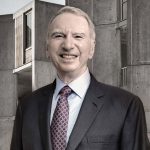 The Jacobs EffectThe Salk Institute and those helped by the Institute’s biomedical research have been particularly fortunate that Jacobs served as chairman of Salk’s Board for 10 years and that he and his wife have supported Salk science for even longer.
The Jacobs EffectThe Salk Institute and those helped by the Institute’s biomedical research have been particularly fortunate that Jacobs served as chairman of Salk’s Board for 10 years and that he and his wife have supported Salk science for even longer.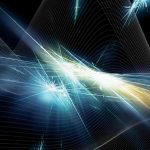 Sparks of InnovationProviding bright and original minds the opportunity to quickly pursue a new idea does frequently result in unexpected and occasionally fundamental breakthroughs, substantially supporting progress in solving our most pressing science and medical problems.
Sparks of InnovationProviding bright and original minds the opportunity to quickly pursue a new idea does frequently result in unexpected and occasionally fundamental breakthroughs, substantially supporting progress in solving our most pressing science and medical problems.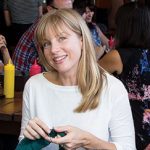 Unraveling the Mysteries of LifeStaff Scientist Abby Buchwalter is studying a part of the nucleus called the nuclear lamina. Akin to a skeleton, the nuclear lamina provides structural support and helps organize the nucleus, the command center of cells.
Unraveling the Mysteries of LifeStaff Scientist Abby Buchwalter is studying a part of the nucleus called the nuclear lamina. Akin to a skeleton, the nuclear lamina provides structural support and helps organize the nucleus, the command center of cells.
